Main menu
Common skin conditions

NEWS
Join DermNet PRO
Read more
Quick links
Author: Vanessa Ngan, Staff Writer; Copy Editor: Clare Morrison; Chief Editor: Dr Amanda Oakley, Dermatologist, Hamilton, New Zealand, October 2013. About Melanoma is sponsored by the New Zealand Dermatological Society Incorporated.
Introduction
More about melanocytes and melanin
Different types of melanoma
Melanoma types and sun damage
Rare types of melanoma
Primary and secondary melanoma
Melanocytes normally make a pigment called melanin.
Some different skin types are shown below.
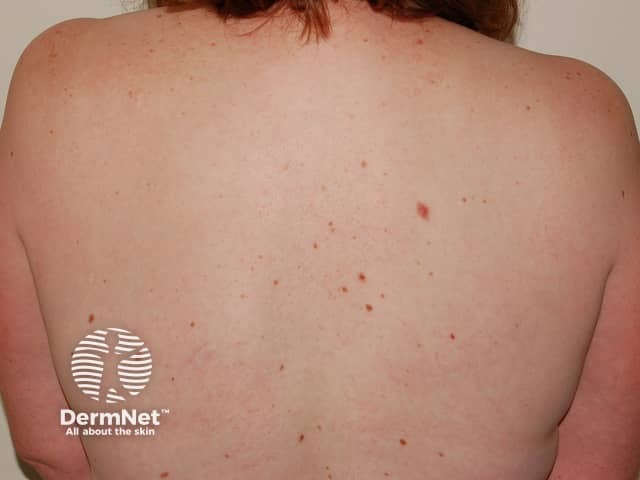
Skin burns. Does not tan
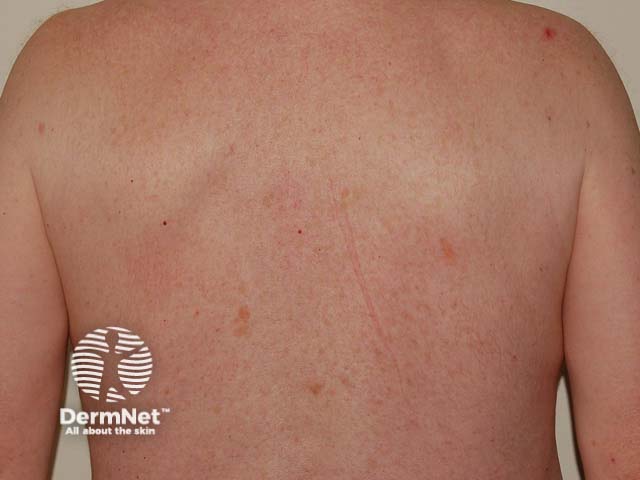
Skin burns easily. Tans poorly
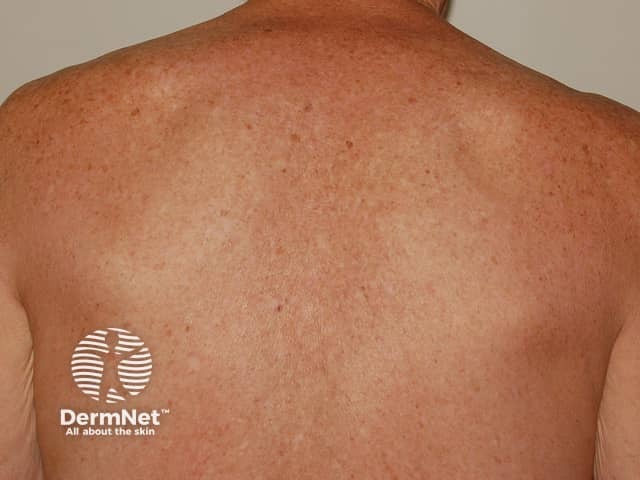
Skin sometimes burns. Tans easily
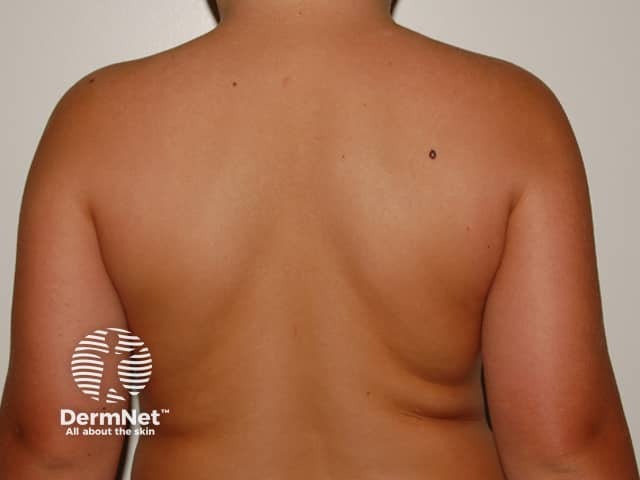
Light brown skin. Rarely burns
There are several different types of melanoma. The differences between them determine what a melanoma looks like, how quickly it will grow, where it appears on the body and who is most likely to get one.
Thin melanomas include:
Superficial spreading melanoma: most often found on trunk and limbs.
Lentigo maligna melanoma: found on scalp, face and neck.
Lentiginous melanoma: similar to lentigo maligna melanoma, but found on upper trunk and upper arms.
Acral lentiginous melanoma: much less common and found on palms, soles and under the nails.
A thin melanoma begins as a flat, multicoloured patch with a smooth surface. Colours may include light brown, dark brown, black, grey, blue, pink and white.
Cancer cells start growing "in situ" within the top layer of skin – this is called the horizontal growth phase.
This type of melanoma slowly grows bigger over months or years.
Eventually the melanoma invades into the deeper layers of skin – this is called the vertical growth phase.
Risk of spread to other tissues depends mainly on thickness of the melanoma at the time it is cut out.
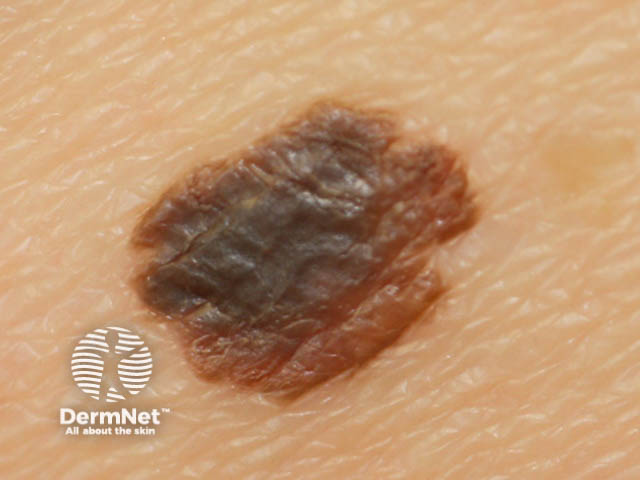
Superficial spreading melanoma
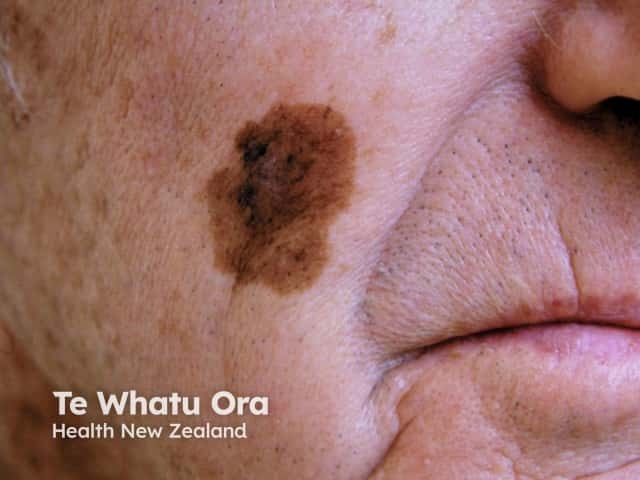
Lentigo maligna
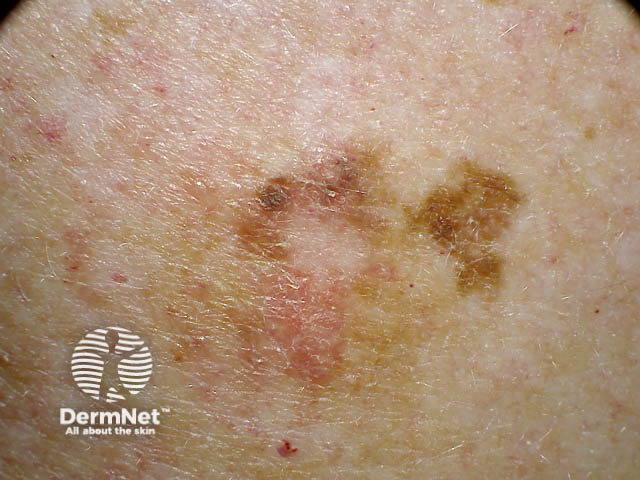
Lentiginous melanoma
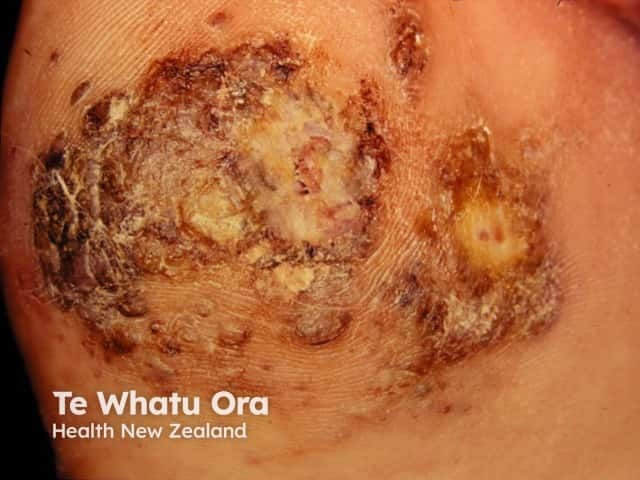
Acral lentiginous melanoma
Thick melanomas include:
Nodular melanoma: most often found on trunk and limbs.
Desmoplastic melanoma: rare, found on head and neck
Spitzoid melanoma: rare, but can affect children and young adults.
A thick melanoma appears as a raised lump that is often a red, black, or blue colour.
Cancer cells start growing in the deeper layers of skin.
Red melanomas are called amelanotic melanomas.
Melanoma can grow rapidly over weeks to months, spreading upwards into the epidermis and downwards into subcutaneous tissue.
Early spread to other tissues (metastasis) may occur even before the melanoma has been surgically removed.
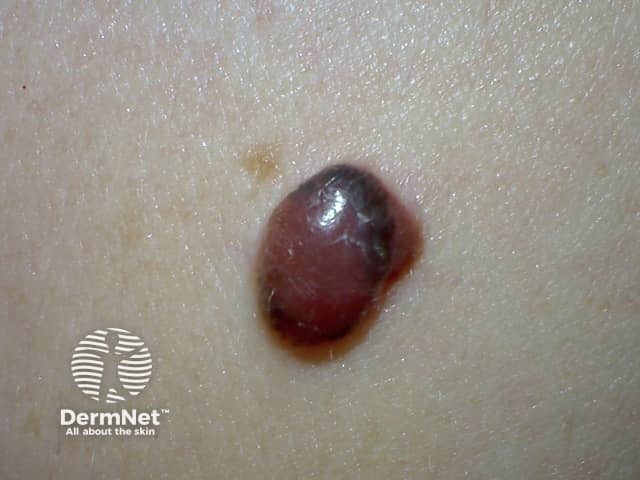
Nodular melanoma
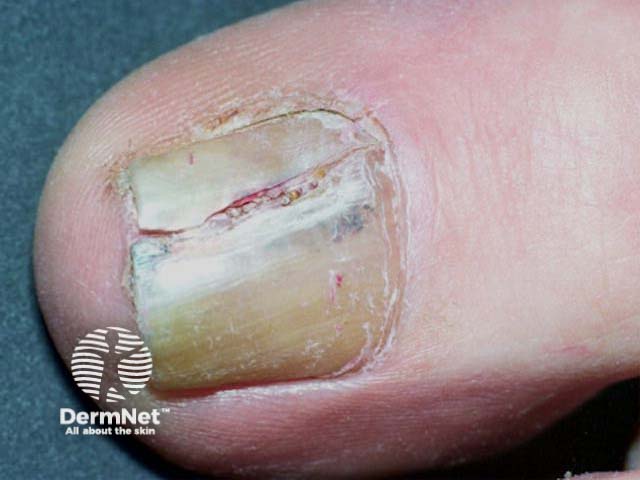
Amelanotic nodular melanoma
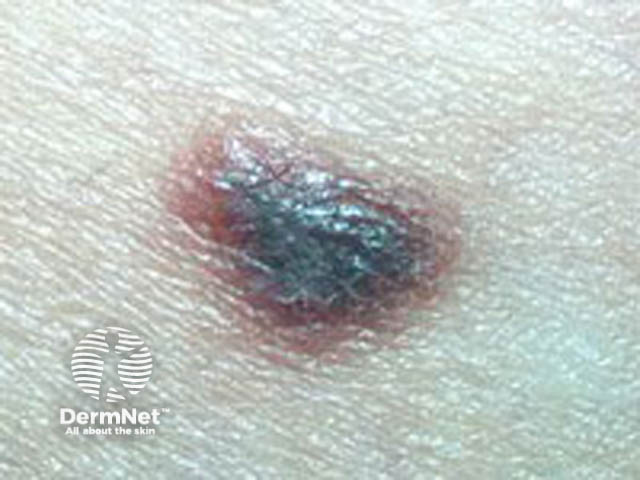
Spitzoid melanoma
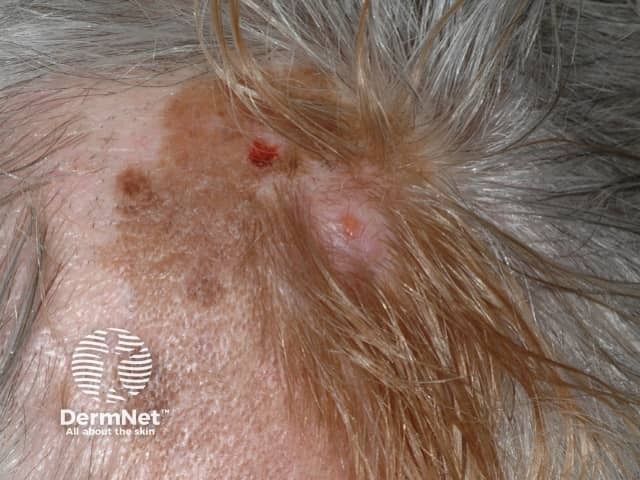
Desmoplastic melanoma
See more images of nodular melanoma
The behaviours of different types of melanoma vary according to the melanomas’ relationship to sun damage.
In New Zealand, melanoma often affects people who are sun damaged. This type of melanoma:
Melanoma can also affect people who actually don't spend a lot of time outdoors. This type of melanoma is associated with earlier sunburn, and:
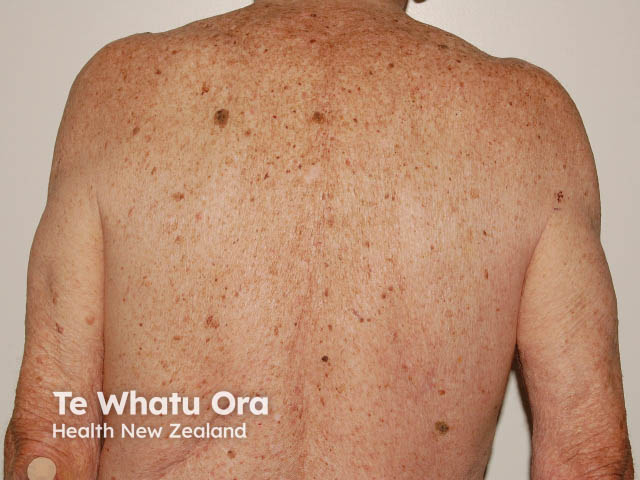
Chronic sun damage*
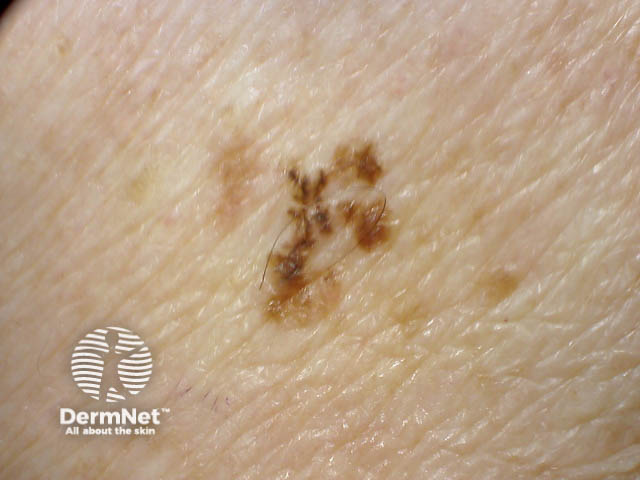
Close-up of melanoma*
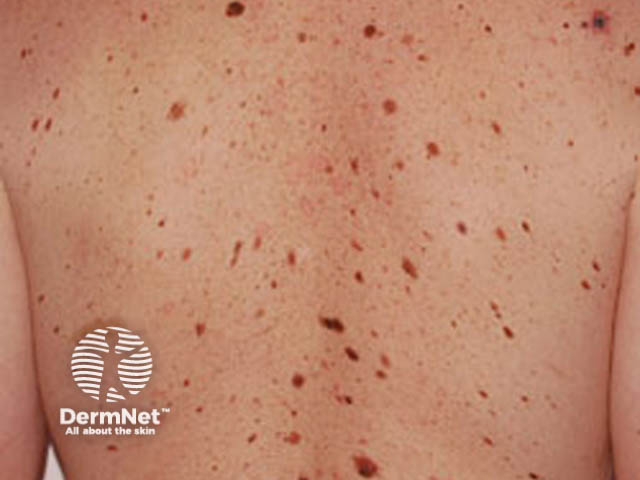
Many and unusual moles**
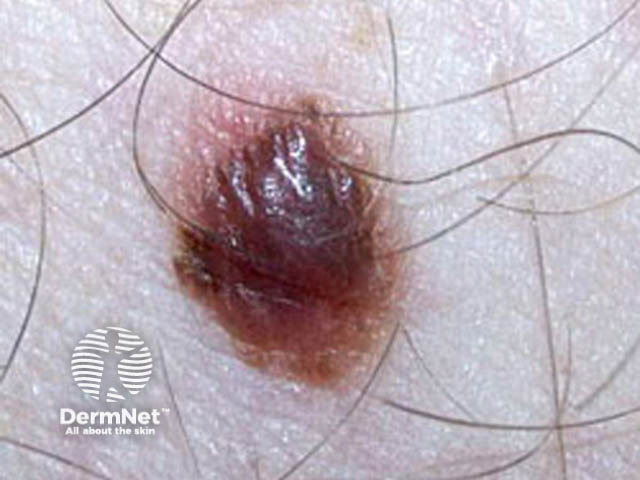
Close-up of melanoma**
Even people with very little exposure to the sun can get melanoma. Melanoma that is not associated with sun exposure:
Melanoma that starts in other parts of the body is much less common than melanoma that starts in the skin. These types of melanoma can grow quickly and are sometimes hard to diagnose.
Mucosal melanoma starts within a mucous membrane. These are the moist linings that cover body cavities and passages such as the mouth, nose and eyelids, and urinary and genital tracts.
Melanoma may rarely start growing in melanocytes within the eye (uveal melanoma), the brain or spinal cord, the lymph glands, or elsewhere.
Melanoma is often described as primary or secondary.
Primary melanoma is the first sign of melanoma. It starts invisibly small within the skin (or rarely within another tissue) and grows over weeks to years.
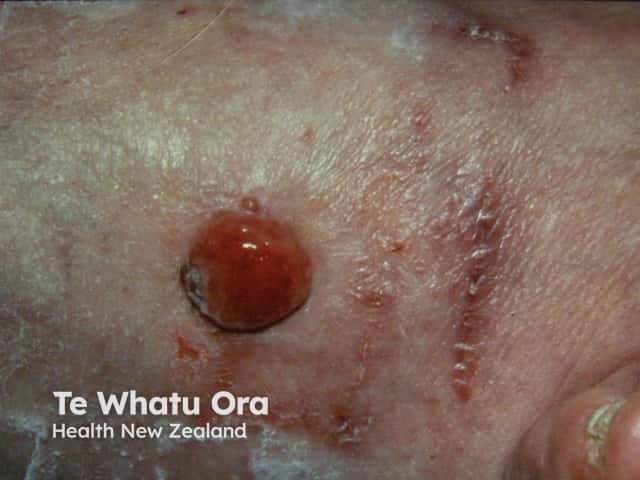
Nodular melanoma
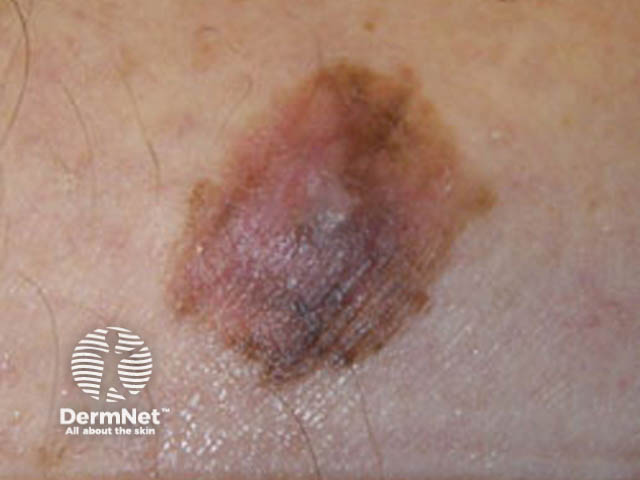
Superficial spreading melanoma
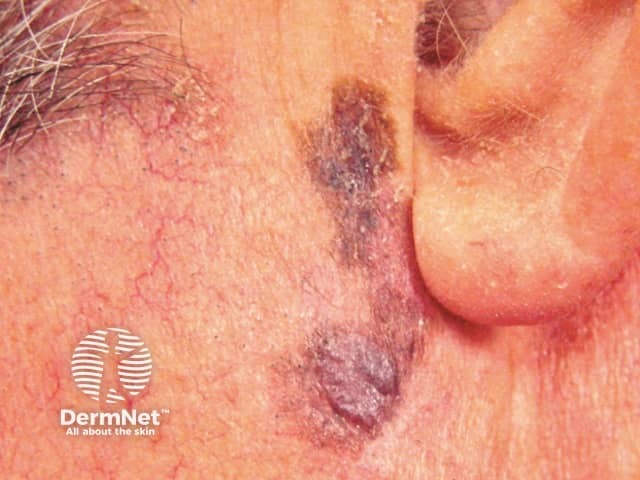
Lentigo maligna
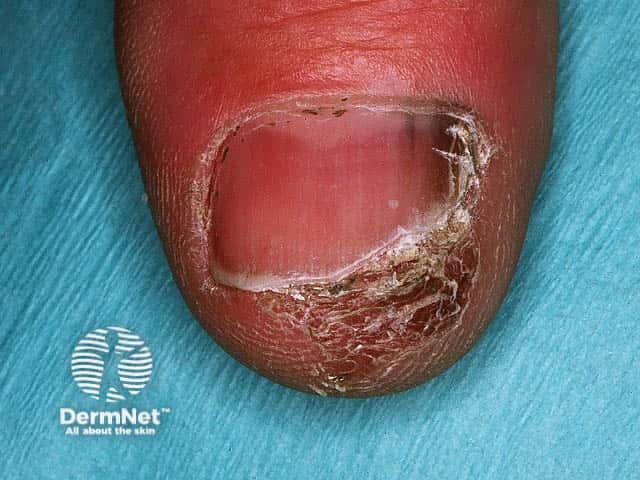
Nail melanoma
Secondary melanoma
Secondary melanoma is the sign that melanoma has spread to other tissues. This is also called advanced melanoma or metastatic melanoma. Secondary melanoma tends to grow quickly (often noticeable over several weeks).
Deposits of metastatic melanoma may grow within lymph nodes (glands) in the neck, armpit or groin. They may also grow within the skin, brain, lungs, liver or other organs.
In about 3% of patients presenting with secondary melanoma (metastasis), the primary tumour is never found.
Metastatic melanoma is detected clinically on examination or by PET-CT scan.
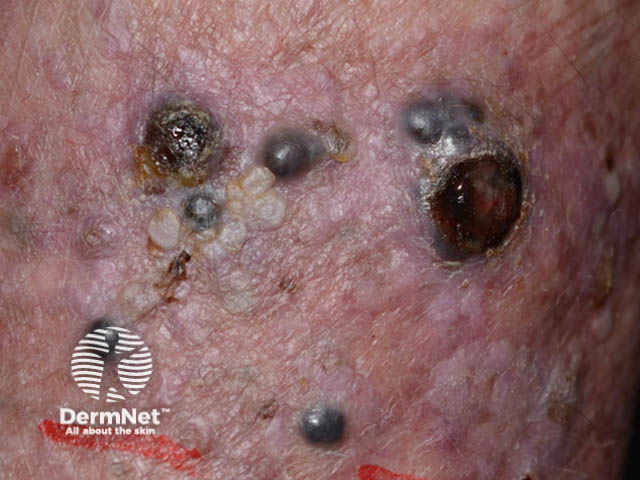
Secondary melanoma in the skin
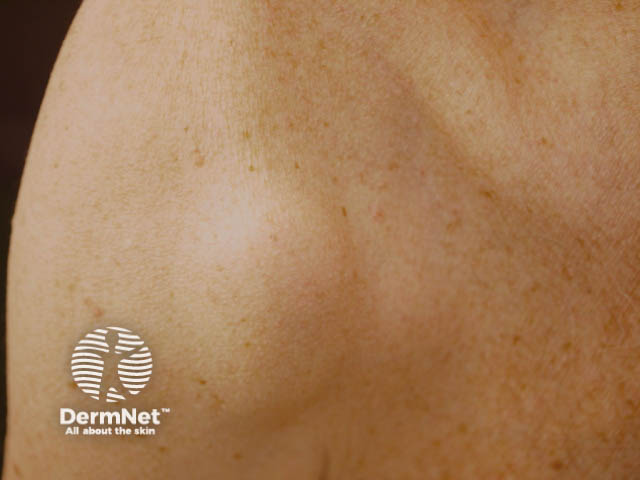
Melanoma under the skin
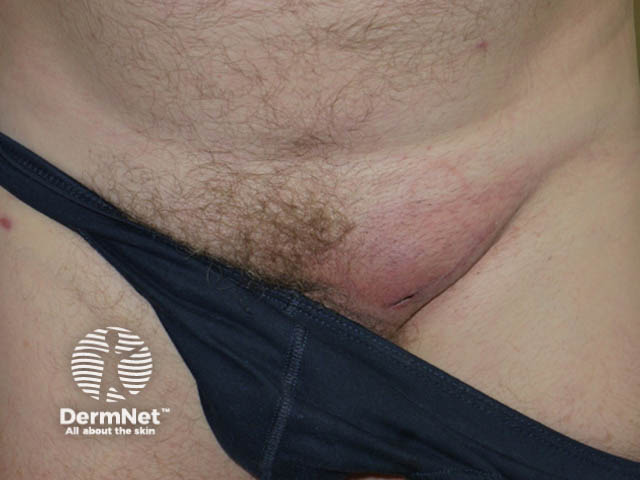
Melanoma in lymph glands
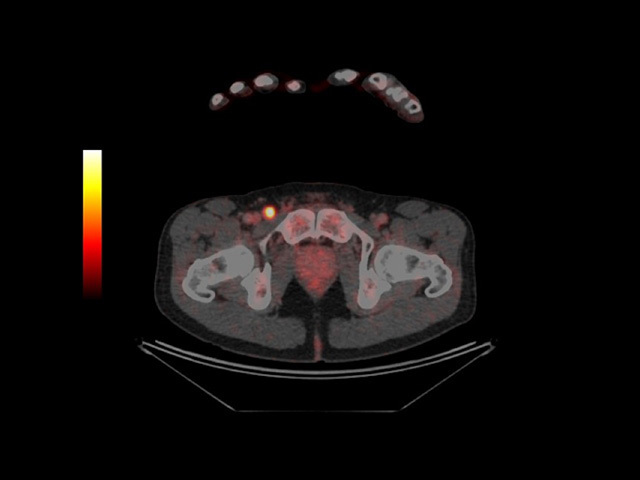
PET-CT scan: metastasis glows in groin
Next: Who gets melanoma?
What is melanoma video (Dr Tina Tian).